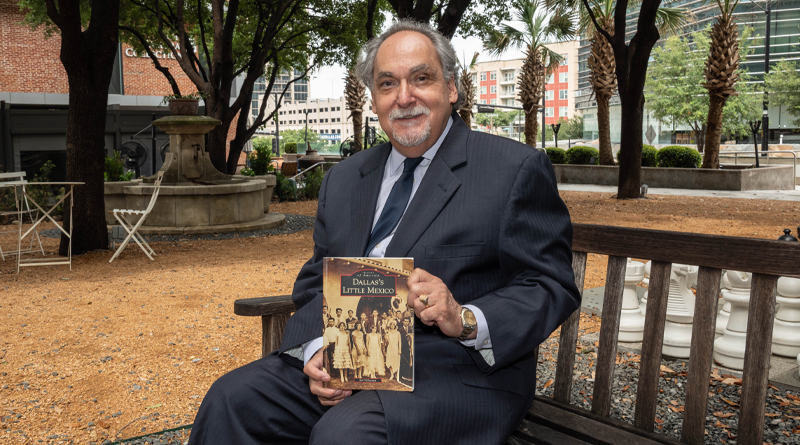Preston Hollow Lawyer Keeps Memory of Little Mexico Alive
Sol Villasana uses writing and law experience to help communities, past and present
Sol Villasana recalls fondly his time growing up and living with his family in Dallas’ Little Mexico.
The community of people and places helped shape who he is, and although he now lives about a 10-minute car ride away in Preston Hollow, the only way he can still see the barrio is through photographs.
Villasana is using his 40-plus years of law experience to fight for the memory of Little Mexico and other communities.
Little Mexico was started by those fleeing the 1910 Mexican revolution. Villasana’s family, who left Mexico during the height of the violence in 1916, were some of the first to settle.
The “lost city” was built north of downtown, near the railroads, on unpaved streets, and near a city dump. Its main street is now Harry Hines Boulevard.
“I think the immigrant story is really important,” Villasana said. “The whole idea of coming to a new country, and not speaking the language, not having much money, but having a drive and an entrepreneurial spirit. I mean, I was impressed growing out by all these folks whose story I didn’t know in detail.”
Villasana knows a lot more details about these stories now.
The idea to write a book about Little Mexico came after the death of his father, Louis Villasana. Rather than from libraries, most of Villasana’s stories and photos in the book came from coffee meetings and old shoeboxes full of keepsakes.
“It was a good time to start talking to people and getting firsthand information from people who were still alive and start trying to accumulate information [and] photographs,” Villasana said.
Writing is not the only way Villasana works to secure Little Mexico’s legacy. He offers his law skills pro bono to help protect historical buildings and other neighborhoods at risk of disappearing because of overdevelopment.
What is currently Saint Ann Restaurant & Bar was built in 1927 as “Dallas’ first school for Hispanic children” and was an important part of Little Mexico’s history. It is still standing today because a group of alumni approached Villasana when they heard it was going to be torn down.
After nine months of legal work, Villasana used Dallas’ landmark ordinance against the landowner and had the building declared a culturally significant historical landmark.
The building was bought by Harwood International and through adaptive reuse now houses a restaurant downstairs and a samurai art museum upstairs.
“So, it still continues to this day (to serve) an educational kind of purpose just like it did in 1927,” Villasana said.
Villasana also works to broker community benefit agreements between developers and existing neighborhoods, ensuring any new construction projects will become part of the community rather than pushing it out.
“I think it’s a happy story,” Villasana said. “Even though most of Little Mexico was lost, that doesn’t have to be the way now for other neighborhoods.”









